Smart meters are bidirectional energy meters that, when installed in photovoltaic systems, make it possible to monitor and control the export of energy to the electrical grid, among other things.
This device ends up being a great addition to the portfolio of photovoltaic solar energy projects.
The three main applications of these meters are energy management, realizing the zero grid strategy and controlling the power limit of the photovoltaic system.
Energy management
With smart meters it is possible to carry out complete energy management of a photovoltaic system connected to the electrical grid. In addition to monitoring energy production, the meter records on the monitoring platform the values of energy consumption (self-consumption), exported energy (injected energy) and imported energy (energy requested from the grid), as shown in the graphs shown below.
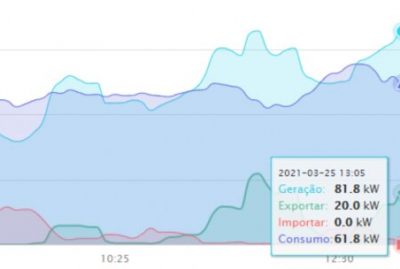
The smart meter needs to be installed between the local loads and the electrical grid, as this is the only way to measure the power flows that are going to the electrical grid (or coming from it) and that are being consumed by the load, as shown in the illustration in figure below.
In the figure, it can be seen that the meter provides the interface between the system and the electrical network. The energy exported to the electricity grid is recorded by the meter. The energy exported is equal to the energy produced (registered by the inverter) minus the energy consumed by the loads.
Indirectly, with the meter located in the position shown in the illustration, we can know the energy consumed by the loads. The meter records the energy exported to the grid or imported from it.
The inverter records the energy produced from the photovoltaic modules. The difference between the two is the energy consumed by local loads.
If the energy produced by the photovoltaic system is less than the energy consumed by the loads, the result of the energy exported will be negative, that is, we are actually importing energy from the electricity grid.
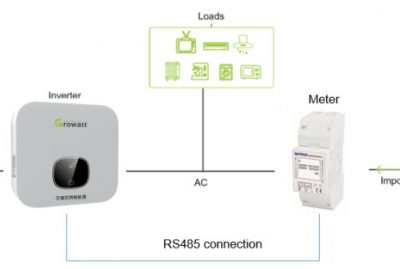
All this installation information is sent in real time to the cloud through communication between the inverter and the meter via RS485. And the inverter uses a Wi-Fi module or an Ethernet connection to send data to the cloud.
One of the widely used functions of this solution is energy export control. This means we can set a power limit for export to the grid. This limit may even be null – meaning that the photovoltaic system will never export any energy to the electrical grid, in what we call zero grid operation.
Zero grid solution
The zero grid solution refers to a photovoltaic system operating strategy in which the energy exported is zero — at any instant the power exported to the grid is zero. This means that at no time will the system send any excess energy to the electrical grid.
This solution is widely used in projects in which it is not permitted to inject excess energy into the electrical grid and projects aimed at self-consumption, in which it is not desired to export energy into the grid.
This strategy can be made possible with the use of a smart meter like the one shown in the previous figure. The meter continuously monitors the power in the grid connection and sends this information to the inverter, which must be configured to operate in zero grid mode.
For the exported energy to be equal to zero, the energy produced and the energy consumed by the loads must be equal.
It is not possible to control the energy consumed by the loads, but it is possible to control the energy produced by the photovoltaic system. In the zero grid control strategy, the inverter will deliver at its output a power value always equal to the instantaneous consumption of the loads.
Even if the available power of the photovoltaic system is higher, the inverter will limit its output power so that it is equal to the power of the loads.
If the power available from the solar system is lower than the loads' needs, the electrical grid will provide the necessary complement. The zero grid system is only configured to prevent the export of energy to the grid, but allows the import of energy.
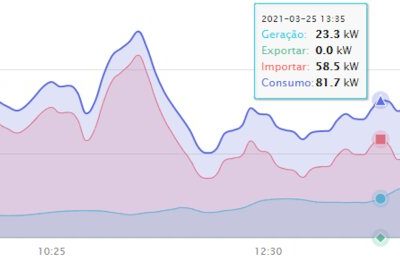
Even though it is a solution in which there is no injection of energy into the grid, many people end up confusing zero grid operation with an off-grid system. However, the project remains an on-grid or grid-tie system, but controlled to avoid energy export. Energy imports, however, are permitted.
System monitoring also takes place during the night, as shown in the following graph. This means that consumption values are also read at night, when there is no solar production available.
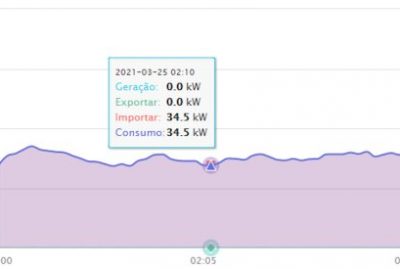
Power limit
Another option for photovoltaic projects is to limit the power exported according to a desired value. It is possible to choose the maximum export power of the system. This mode of operation is very similar to the previous one, with the exception that in this case energy export is allowed.
For example, we can define the maximum exported power to be 5 kW. The maximum power that the inverter can reach will then be equal to 5 kW plus the power required by local loads.
If the loads have a demand of 10 kW, the maximum value that the inverter can reach will be 15 kW, as 10 kW will be allocated to the loads and 5 kW will be exported to the electrical grid.
Even if the photovoltaic system has an availability of 20 kW at that moment, the maximum that the inverter will deliver at its output will be 15 kW, as we will be respecting the configured export limit.
This solution is widely used in projects that cannot exceed a certain energy export value as there is some physical limitation in the electrical network.
Solution for plants with more than one inverter installed
The solution presented previously, based on equipment from the manufacturer Growatt, using a smart meter, is compatible with just one inverter.
When we install more than one inverter in the project, it is necessary to use an intelligent energy manager (Smart Energy Manager), available only for three-phase systems, as shown in the following figure. Smart Energy Manager has the ability to monitor and control up to 32 inverters.
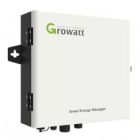
Due to the larger size of the plant, the Smart Energy Manager's current measurement is done using current transformers (CTs), which are normally supplied by the equipment manufacturer itself. In the case of Growatt solutions, for example, the CTs are supplied with specifications suitable for three project sizes: 100 kW, 300 kW and 600 kW.
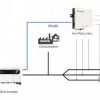
In this type of installation, the inverters connect to the Smart Energy Manager via an RS485 communication network. The intelligent manager sends and receives information from the inverters.
In this solution, it is not necessary to install a Wi-Fi or Ethernet communication module in each of the inverters, as data is sent to the cloud by the Smart Energy Manager.
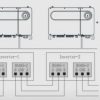
Several manufacturers provide control modules that allow the management of electrical energy in large photovoltaic systems. In this article we exemplify Growatt's Smart Energy Manager solution, with which it is possible to monitor and manage large photovoltaic solar energy projects.
Even if the project does not require export control, it is very valuable to have an intelligent energy manager for managing and monitoring the energy of the entire system, ensuring better support, more complete reports and improving the end customer experience by monitoring the entire your plant.

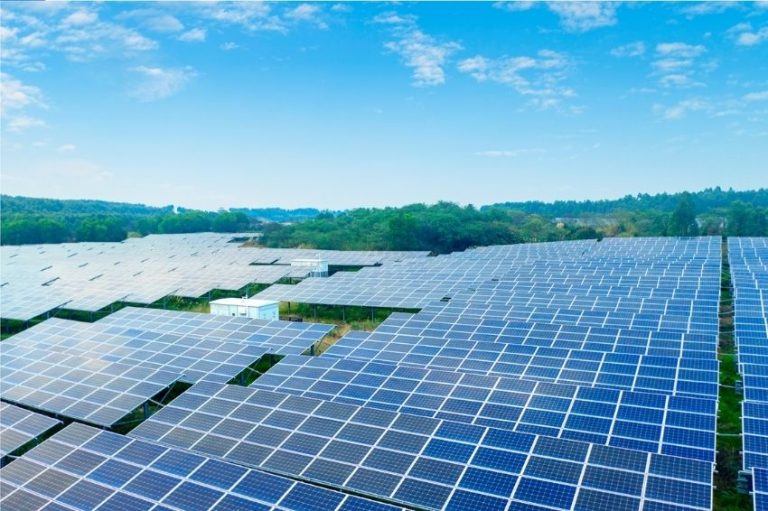













One Response
Congratulations Guilherme!! Objective with didactic and accessible language.
People say they understand what self-consumption is until the electricity bill arrives… and with it the question and statement!? 'My inverter produced 1000kwh, but the bill only has 600kwh?? ” Of course, the good explanation at the beginning of the project should be enough, but if the equipment had the possibility of measuring consumption (with the onboarding of appropriate technology) the management of the system would bring more confidence.